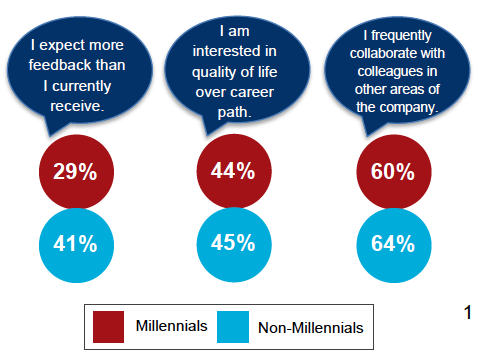
In November I wrote about Linkedin’s 2016 Global Recruiting Trends Report (you can re-read it here) and took them to task about their methodology. Turns out they did a bit of a miscalculation and corrected data that looked askew. Good on them. As I looked at a relatively new infographic about their survey data, I was again intrigued by some of their findings. In a good way.
The infographic, found in Linkedin’s Talent Blog, 4 Recruiting Trends to Watch in 2016, boils the report down to 4 key points – and they are good ones:
- Quality of Hire is the magic metric
- Employers are finding quality hires faster through professional networks
- Employer branding is bouncing back as a top priority
- Employee retention is growing as a top employer priority
The big question raised in my mind by this infographic is: how should we define quality of hire. Linkedin helps us understand that perhaps we should be talking about this a little more than we are.
Linkedin’s data show that around the world, the KPIs that define quality of hire shift between three primary metrics:
- New Hire Performance Evaluation
- Turnover/Retention
- Hiring Manager Satisfaction
These are interesting and good metrics. But are they the correct metrics to use in judging wether a hire was a quality hire?
As more employers shun “labeling” performance and leave traditional performance management systems and their inherent biases in the dust, having fair, accurate and reliable performance evaluation metrics may be harder and harder to obtain – especially for employees new to their jobs.
Turnover and retention data are somewhat valuable in that they measure whether the new employee actually commits to their job and the organization and decide to stay. The challenge with this particular measure is that it is two-sided. Employees can quit their jobs if they don’t like their employee experience more easily than employers can fire new employees who don’t perform. It’s hard to make a case that turnover or retention are valid measures of quality of hire.
And hiring manager satisfaction, while maybe the most influential measure, is the least scientifically valid assessment of the three: every manager has their own performance benchmarks that are shaped by their experience, education and time in the job. Certainly a new employee’s ability to create a positive relationship with their boss is significantly influential in creating a positive impression from a performance evaluation perspective. And that makes it only vaguely valid.
It’s interesting that employers in different parts of the world have developed different steps to develop Linkedin’s “magic metric.” That there is not the emergence of a common standard (SHRM or CIPD anyone? Bueller?) creates opportunities for stakeholders to get confused about what is trying to be accomplished. And that just makes it harder to make a business case for a critical aspect of talent management.
I think Linkedin has pointed out an opportunity for significant value in the talent management game: unless and until we can develop a relatively standard, valid set of KPIs for Quality of Hire, we can’t really make sense of whether or not we’re hiring the great talent we all need. And since having the right talent available to us when and where we need it will make the difference in whether our businesses survive or not, getting a handle on the magic metric just might be helpful.










 languages, which needs to be more common in the U.S. Or even the readiness of college graduates to take a place in the economy, which a majority of employers report is lacking.
languages, which needs to be more common in the U.S. Or even the readiness of college graduates to take a place in the economy, which a majority of employers report is lacking.



 1.) Have a tactical plan to stay on top of regulatory (pay particular attention to NLRB rulings and timetables for implementation of the Affordable Healthcare Act) and legislative changes coming from your city, your state house and Washington D.C.
1.) Have a tactical plan to stay on top of regulatory (pay particular attention to NLRB rulings and timetables for implementation of the Affordable Healthcare Act) and legislative changes coming from your city, your state house and Washington D.C.




